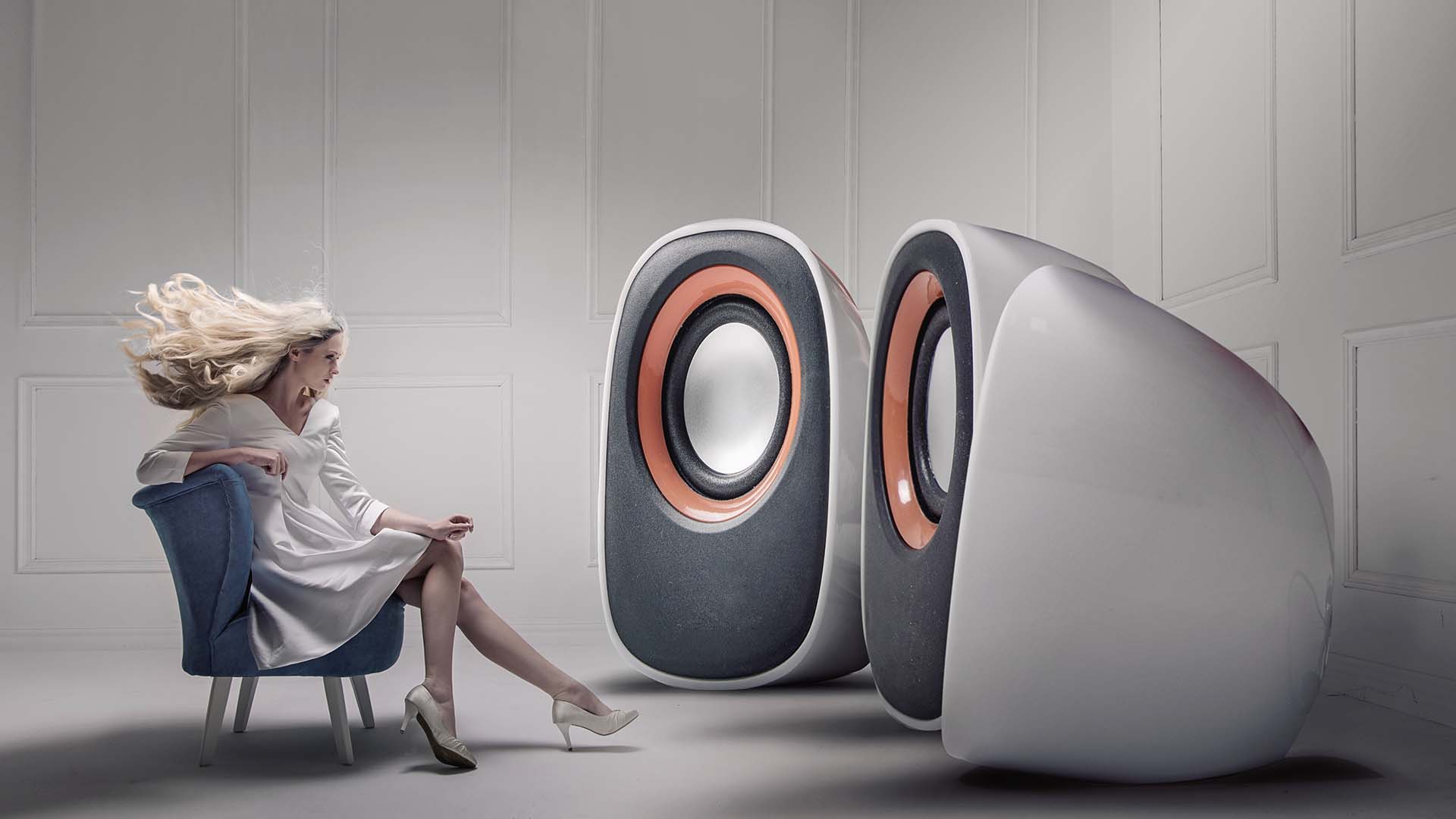
This article isn't about sustainability, even though there's plenty to write about that. It's about your listening and viewing environment. It's more important than you might think.
Do you remember those glossy adverts featuring an edgy-looking guy in a warehouse-style loft apartment, sitting in a mid-century modern armchair, facing an expensive pair of Hi-Fi speakers?
All very impressive, if faintly ludicrous.
The reality would have been quite different, because with no curtains, no carpets, bare ceilings, and walls, it would have sounded terrible. These are absolutely the worst conditions for listening to a top-end Hi-Fi.
It's easy to understand why. Bare surfaces act like mirrors to sound. What might have left the loudspeaker as a clear, well-formed stream of audio can quickly degenerate into chaos when it's bounced off a few physical objects.
All rooms are different. Even the same size and shape of room will behave differently depending on how it's furnished and kitted out. And that's good news, because it means there's a lot you can do to "tame" an over-reflective room.
We'll come back to that in a minute, but, first, it's worth mentioning light and colour. So many video professionals are now doing their grading at home that manufacturers have started making affordable, colour-accurate monitors that are capable of the sort of performance that you'd previously only have found in an expensive facility.
What you usually don't find at home is a working environment that's tailored for colour-critical activity. And that's a big problem, because our eyes work in a very specific way.
What works perfectly well in everyday life is - perhaps surprisingly - almost entirely unsuitable for precision colour grading. That's because our eyes work in a relative way. We're just not calibrated for colour. So it's incredibly important to do everything we can to minimise our tendency to make assumptions about the intensity and the colour of light. Imagine a room with an orange "feature" wall. That's enough to knock our colour perception sideways.
Please don't take my input here as professional advice. I'm not a colourist. But I think this is pretty much common sense. Let me know if you disagree.
How it relates to audio
Turning back to audio: you can make a room sound better with minimal effort, and it's all pretty low-tech. I can illustrate this with my own house. I have two really problematic rooms and one fantastic one.
My kitchen and my home office have a wooden floor. The kitchen is about 7m x 7m and is more of a kitchen/living area. But it's like the inside of a metal biscuit tin - it sounds terrible. I've tried all sorts of setups without any improvement. Short of laying a carpet or hanging unattractive acoustic panels on the wall, I'm going to have to live with it.
My office is the same but a quarter of the size. It also sounds dreadful, and that's a problem, because I write music in there. I know the answer is acoustic panels, and I will install them when I get a chance. Meanwhile, I listen on headphones - which is a surprisingly good pragmatic solution.
A few tips for getting good audio:
Speaker wire
It's definitely worth choosing a thick cable. It doesn't have to have any magical coatings or infusions. It doesn't have to come in a flight case. There's no need to align the wires with ley lines. Nor is there any need for druidic chanting. It's easy: what speakers need is current, which thin cables can't deliver. 45 amp cooker cable is preferable to doorbell wire.
Better still is "proper" speaker cable, but don't be tempted to pay more than seems sensible. Just for the record, there are some excellent speaker wire companies, and they can be a bit expensive, but they make solid, reliable products. You get what you pay for, up to the point when the physics starts descending into woo.
Speaker stands can add enormous value to a loudspeaker, making even average ones sound a class or two better. Again, there's no magic. What matters is that the speaker is braced against a significant mass. Think of it like this: speakers make sound by moving air with a large diaphragm. This mechanism represents work for the loudspeaker. Newtonian physics apply here: the reaction to the speaker's action is to move backwards when the cone moves forwards, causing the sound to be muffled or at least not as accurate as it potentially could be.
Does it really matter? To my ears, yes. Try it before you "@" me.
Finally, experiment with positioning the speakers. Some loudspeakers have a port on the back that will require room to "breath". Some work better adjacent to walls; some need more space. Others sound better in corners. The documentation that comes with speakers will have suggestions for this.
Your colour and acoustic environments have a direct effect on your output. You can't make objective judgements about your work if your surroundings distract you or render your work indistinct. So before you blame your speakers or your computer monitor, spend some time getting the room right. If you do it well, the results can be remarkable.
Tags: Audio


Comments